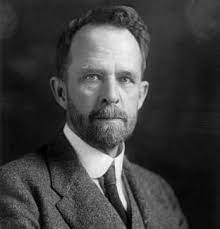Why was Thomas Hunt Morgan Awarded the Nobel Prize for Physiology or Medicine in 1933?
Thomas Hunt Morgan: Nobel Laureate for Pioneering Discoveries in Genetics (1933)
Thomas Hunt Morgan, an American geneticist, made groundbreaking contributions to the field of genetics during the early 20th century. Renowned for his pioneering research on the inheritance of traits in fruit flies, Morgan played a pivotal role in unraveling the principles of genetic inheritance. In recognition of his exceptional work, he was awarded the Nobel Prize for Physiology or Medicine in 1933. This article explores the reasons behind Morgan’s prestigious honor and highlights his remarkable scientific breakthroughs.

Drosophila and the Chromosome Theory of Inheritance:
Thomas Hunt Morgan’s Nobel Prize was primarily awarded for his investigations using the fruit fly, Drosophila melanogaster, to study the patterns of inheritance. Morgan established Drosophila as a model organism for genetic research and conducted extensive breeding experiments to unravel the principles of heredity.
Morgan’s key discovery was the confirmation of the chromosome theory of inheritance. He observed that specific traits in Drosophila were linked to specific chromosomes, suggesting that genes responsible for inherited traits are located on these structures. His work provided compelling evidence for the physical basis of heredity and laid the foundation for our understanding of how genes are passed down from generation to generation.
Sex-Linked Inheritance and the Concept of Genetic Mapping:
Morgan’s research on Drosophila also led to the discovery of sex-linked inheritance, a groundbreaking finding that revolutionized our understanding of how certain traits are transmitted. He observed that certain traits, such as eye color, were associated with specific sex chromosomes, leading to sex-dependent inheritance patterns.
Additionally, Morgan introduced the concept of genetic mapping by observing the frequency of recombination between genes on the same chromosome. His experiments provided a way to estimate the relative distances between genes, thus mapping their positions along the chromosomes.
Impact on Genetics and Evolutionary Biology:
Thomas Hunt Morgan’s contributions had a profound impact on the fields of genetics and evolutionary biology. His discoveries laid the foundation for the study of inheritance patterns in other organisms, including humans. Morgan’s research enabled the identification and characterization of specific genes responsible for various traits, forming the basis of modern genetic research.
Furthermore, Morgan’s work provided key insights into the mechanisms of evolution. By understanding how genetic variations are inherited and passed down through generations, scientists gained a deeper understanding of the role of genetic changes in driving evolutionary processes.
Recognition and Legacy:
Thomas Hunt Morgan’s Nobel Prize in 1933 celebrated his exceptional scientific achievements and the transformative impact of his research in genetics. His pioneering work on Drosophila and the chromosome theory of inheritance laid the foundation for modern genetics, revolutionizing our understanding of genetic inheritance, sex-linked traits, and genetic mapping.
Morgan’s contributions continue to shape the field of genetics, guiding our understanding of inherited traits, genetic disorders, and the mechanisms of evolution. His research serves as a cornerstone for further advancements in genetics, molecular biology, and the broader field of biological sciences.
Thomas Hunt Morgan’s Nobel Prize in 1933 honored his groundbreaking contributions to the field of genetics and his pivotal role in establishing the chromosome theory of inheritance. His research using Drosophila as a model organism paved the way for understanding the principles of genetic inheritance, sex-linked traits, and genetic mapping. Morgan’s legacy continues to inspire scientists, shaping our understanding of genetic processes, heredity, and the mechanisms of evolution. His work stands as a testament to the power of scientific inquiry and the pursuit of knowledge in unraveling the mysteries of life’s building blocks.




